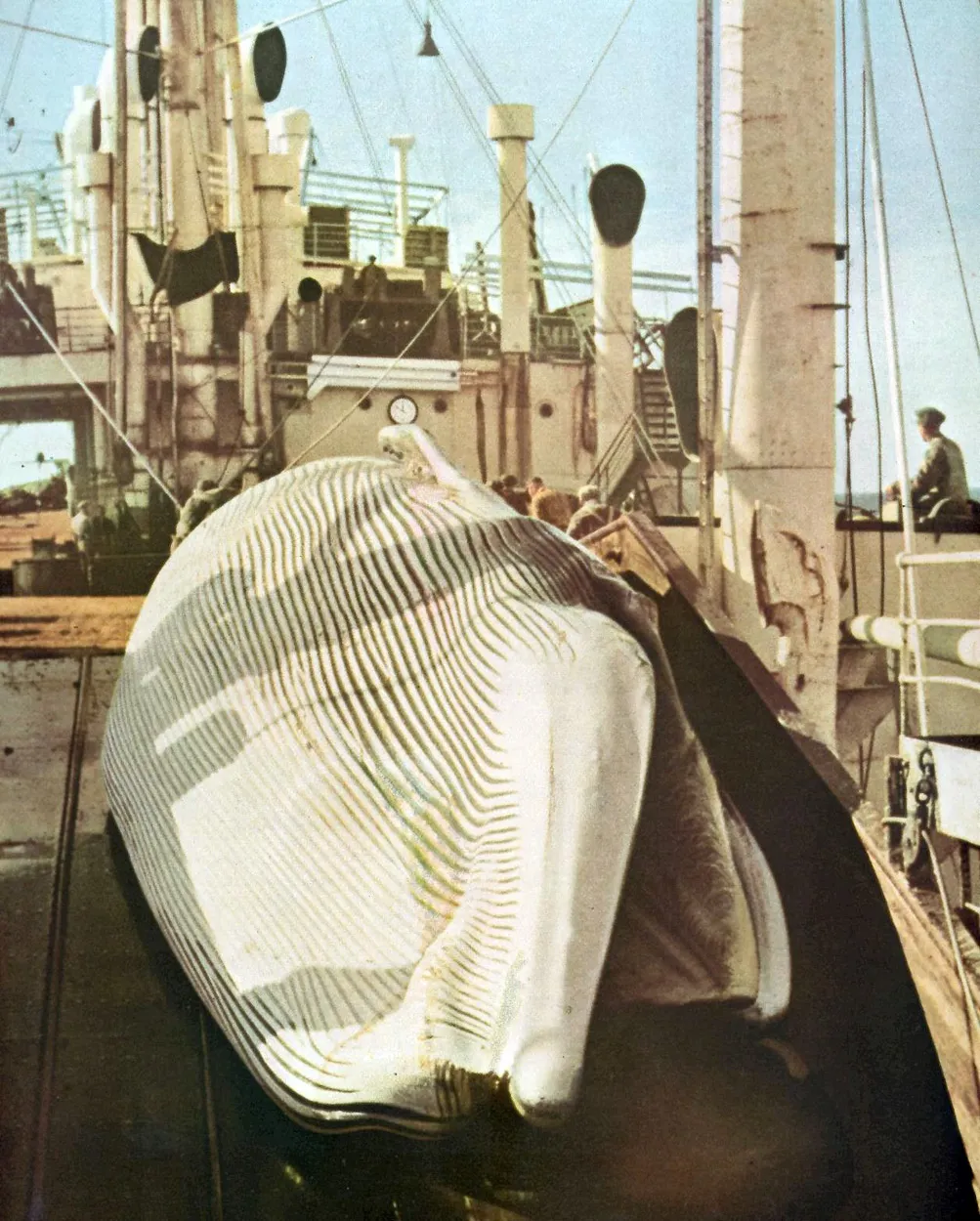Hauling a Whale up the Slipway
Whales and Whaling pictures
Next
Previous
Back to gallery
Back to whale and whaling
thumbnails
A fin whale being hauled aboard a factory ship, here reaching the top of the slipway. The throat pleats that mark out the rorquals can be easily seen in the picture, these allow the mouth to be opened to enormous volume when the whale takes a mouthful of sea-water and food, the water is expelled and the food retained.
The invention of the slipway and onboard flensing was another great step forwards in the technology of industrial whaling. Prior to this, whales had been flensed by the side of the whaling ships, with perhaps just occasional smaller catches being hauled aboard using cranes or winches. The advantages were numerous allowing whales to be flensed in sea conditions that would have made outboard flensing impossible. It also meant that the whales could be worked on by many men at the same time and allowed for the disarticulation of parts of the whales being taken to other parts of the deck for further processing using bone-saws for instance.
None of the whale was in danger of being lost this way and the risks taken by the flensers were reduced considerably as was the improvement of their working conditions, though still remained hard and fraught with risk from blades, saws, winches, cables and pieces of whale weighing tonnes each.
As ever in any of man's endeavours, advances in technology were more often made to improve profit, rather than the lot of the workers involved.

